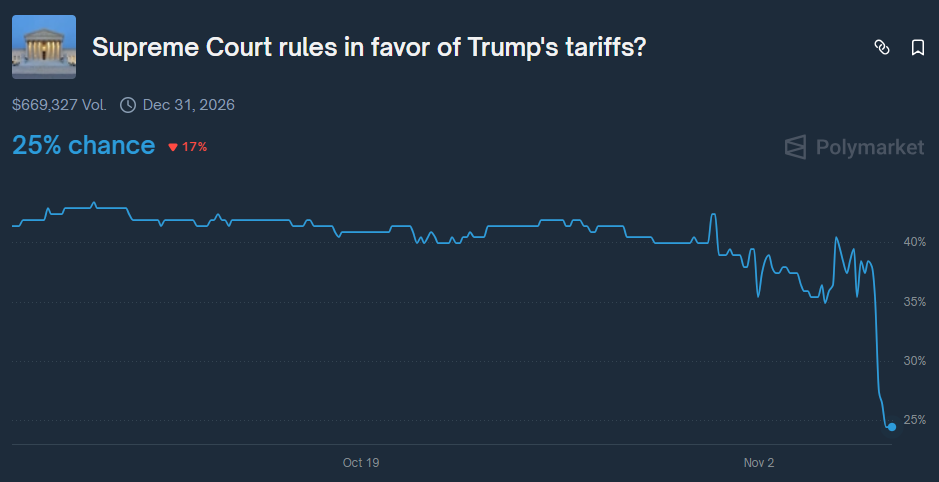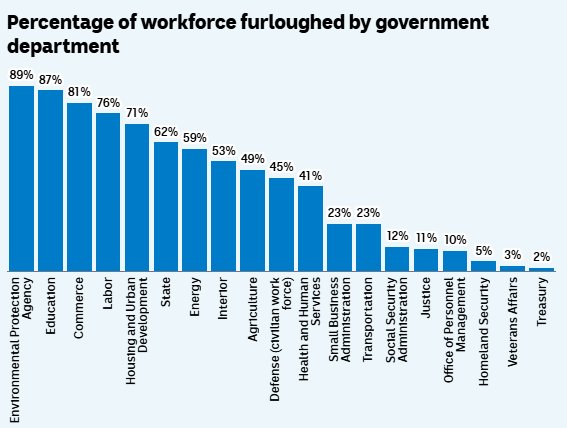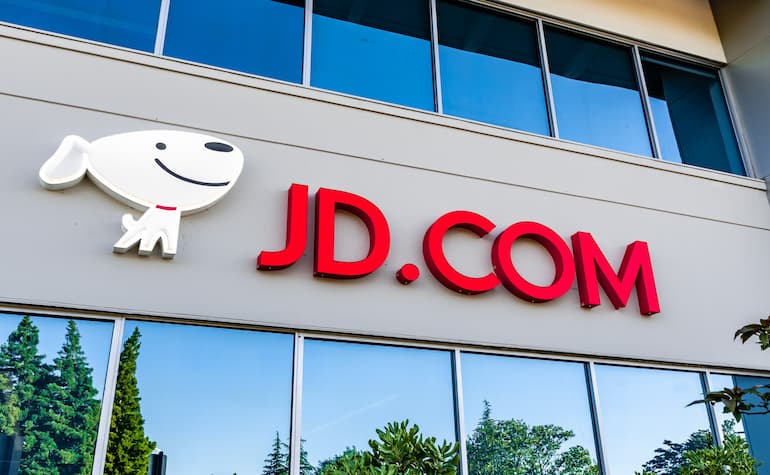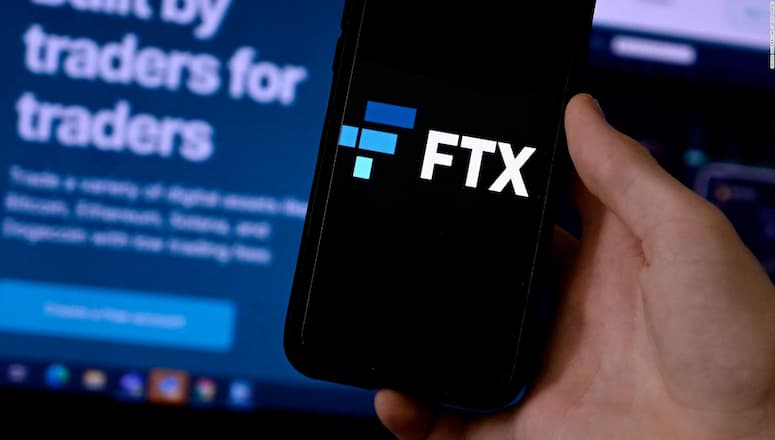Noticias del mercado & perspectivas
Anticípate a los mercados con perspectivas de expertos, noticias y análisis técnico para guiar tus decisiones de trading.

Artificial intelligence stocks have begun to waver slightly, experiencing a selloff period in the first week of this month. The Nasdaq has fallen approximately 2%, wiping out around $500 billion in market value from top technology companies.

Palantir Technologies dropped nearly 8% despite beating Wall Street estimates and issuing strong guidance, highlighting growing investor concerns about stretched valuations in the AI sector.
Nvidia shares also fell roughly 4%, while the broader selloff extended to Asian markets, which experienced some of their sharpest declines since April.
Wall Street executives, including Morgan Stanley CEO Ted Pick and Goldman Sachs CEO David Solomon, warned of potential 10-20% drawdowns in equity markets over the coming year.
And Michael Burry, famous for predicting the 2008 housing crisis, recently revealed his $1.1 billion bet against both Nvidia and Palantir, further pushing the narrative that the AI rally may be overextended.
As we near 2026, the sentiment around AI is seemingly starting to shift, with investors beginning to seek evidence of tangible returns on the massive investments flowing into AI, rather than simply betting on future potential.
However, despite the recent turbulence, many are simply characterising this pullback as "healthy" profit-taking rather than a fundamental reassessment of AI's value.
Supreme Court Raises Doubts About Trump’s Tariffs
The US Supreme Court heard arguments overnight on the legality of President Donald Trump's "liberation day" tariffs, with judges from both sides of the political spectrum expressing scepticism about the presidential authority being claimed.
Trump has relied on a 1970s-era emergency law, the International Emergency Economic Powers Act (IEEPA), to impose sweeping tariffs on goods imported into the US.
At the centre of the case are two core questions: whether the IEEPA authorises these sweeping tariffs, and if so, whether Trump’s implementation is constitutional.
Chief Justice John Roberts and Justice Amy Coney Barrett indicated they may be inclined to strike down or curb the majority of the tariffs, while Justice Brett Kavanaugh questioned why no president before Trump had used this authority.
Prediction markets saw the probability of the court upholding the tariffs drop from 40% to 25% after the hearing.

The US government has collected $151 billion from customs duties in the second half of 2025 alone, a nearly 300% increase over the same period in 2024.
Should the court rule against the tariffs, potential refunds could reach approximately $100 billion.
The court has not indicated a date on which it will issue its final ruling, though the Trump administration has requested an expedited decision.
Shutdown Becomes Longest in US History
The US government shutdown entered its 36th day today, officially becoming the longest in history. It surpasses the previous 35-day record set during Trump's first term from December 2018 to January 2019.
The Senate has failed 14 times to advance spending legislation, falling short of the 60-vote supermajority by five votes in the most recent vote.
So far, approximately 670,000 federal employees have been furloughed, and 730,000 are currently working without pay. Over 1.3 million active-duty military personnel and 750,000 National Guard and reserve personnel are also working unpaid.

SNAP food stamp benefits ran out of funding on November 1 — something 42 million Americans rely on weekly. However, the Trump administration has committed to partial payments to subsidise the benefits, though delivery could take several weeks.
Flight disruptions have affected 3.2 million passengers, with staffing shortages hitting more than half of the nation's 30 major airports. Nearly 80% of New York's air traffic controllers are absent.
From a market perspective, each week of shutdown reduces GDP by approximately 0.1%. The Congressional Budget Office estimates the total cost of the shutdown will be between $7 billion and $14 billion, with the higher figure assuming an eight-week duration.
Consumer spending could drop by $30 billion if the eight-week duration is reached, according to White House economists, with potential GDP impacts of up to 2 percentage points total.


Medtronic posts mixed results Medtronic Plc (NYSE: MDT) reported latest financial results for its second quarter of fiscal year 2023, which ended October 28, 2022 on Tuesday. The medical technology company posted mixed results for the quarter. Revenue reported at $7.585 billion (down 3% year-over-year) vs. $7.698 billion expected.
Earnings per share reported at $1.30 per share (down by 2% year-over-year) vs. $1.277 per share estimate. "Slower than predicted procedure and supply recovery drove revenue below our expectations this quarter. We continue to take decisive actions to improve the overall performance of the company, including streamlining our organizational structure, strengthening our supply chain, driving a performance culture, and strategically allocating capital to support our best growth opportunities with the investments they deserve," Geoff Martha, CEO of the company said in press release. "We're seeing the benefit of these changes – along with new incentives and strong execution – in certain businesses, and we're focused on ensuring these efforts translate into improved performance across the company. Looking ahead, we're confident we have a clear path to delivering durable growth and increased shareholder value," Martha concluded.
The stock was down by around 5% on Tuesday at $77.74 a share. Stock performance 1 month: -2.62% 3 month: -8.79% Year-to-date: -20.45% 1 year: -27.42% Medtronic price targets Barclays: $90 Truist Securities: $89 Mizuho: $100 Jefferies: $87 Morgan Stanley: $97 RBC Capital: $110 Wells Fargo: $96 Stifel: $105 Medtronic is the 114 th largest company in the world with a market cap of $109.37 billion. You can trade Medtronic Plc (NYSE: MDT) and many other stocks from the NYSE, NASDAQ, HKEX, ASX, LSE and DE with GO Markets as a Share CFD.
Sources: Medtronic Plc, TradingView, MarketWatch, MetaTrader 5, Benzinga, CompaniesMarketCap


The market in recent months has created exceptionally difficult conditions to trade. Low volatility and obscure price action has reduced the volatility available for traders to capitalise on. These conditions have affected FOREX, Equity, and Index trading.
It has been specifically difficult for momentum and trend following traders as a certain level of volatility is needed for trader to return profitable trades. How to spot low volatility The Average True range or ATR range can be an important indicator in determining the level of volatility in a market or asset. It measures the average trading range of a particular asset’s price over a period.
It can exceptionally be helpful in determining how volatile the asset is at a certain point in time, or how volatile an asset is compared to another one. For instance, looking at the ATR for the Dow Jones, it has been getting progressively lower and is at its lowest level since August indicating a reduction in volatility. The Market Volatility Index or the VIX measures volatility across the S&P 500 is also an important indicator to not just gauge market volatility, but also general market sentiment and emotion.
When fear and greed are prominent in the market volatility tends to increase and when they dissipate, they tend to decrease. As the chart shows, volatility has been reducing to levels not seen since the rally in August 2022. The characteristics of the chart are also interesting as the VIX acts much more in waves then other indices do.
How can you optimise your trading during periods of low volatility? Tips for trading in low volatility markets Understand that breakouts will fail. Specifically for traders who like to use strategies based on momentum breakouts, during times of low volatility the price means to stay close to moving averages and mean price points both on an intra and inter day level.
Wait for confirmation before a momentum move. Although breakouts are less common in low volatility markets, they do still occur. In this instance, it is ideal to wait for a confirmation or retest of an important level before entering trades.
Confirmation can be supported by strong candle in support or increased volume. Being patient is essentially in times of low volatility. Opportunities that may have otherwise eventuated.
Utilising volume and strong candlesticks as secondary Price tends to stay close its mean. This means that if a price does break out or break down, the price often swings back to the mean. The mean may be a simple moving average, Volume Weighted Average, or some other measure.
In essence it does not really matter what is used, rather than the price tends to retrace back to the mean in some manner. Therefore, these conditions lend themselves to mean reversion systems or strategies. As seen on the chart below, the price has reverted to the 20-period moving average on multiple occasions.
Using multiple time frame analysis for identifying support and resistance. As previously stated, when there is low volatility, finding real breakouts that will last becomes more difficult. By ensuring that the breakouts or breakdowns in price are occurring across multiple timeframes a trader can enhance their chance of it being sustained as their will likely be a higher level being traded at longer term levels.
Trading can be difficult during periods of low volatility. However, this does not mean traders should not trade. Rather, traders should be aware of potential obstacles and difficulties that may arise and the strategies that can help work though these difficulties.


As the week comes to an end, many cryptocurrency investors grow increasingly nervous. This emotional sentiment has resulted in bitcoin’s new 18 month’s low price, since December 2020. It has also caused a well known crypto company, Celsius, to suspend client’s withdrawals.
Bitcoin started the week at $27,000 USD which was a 10% decrease from Friday’s closing price of around $30,000 USD. Since the opening of the week, it has dropped another 23% to almost $20,000 USD. This is almost a 70% decline from last October’s peak of nearly $69,000 USD.
This sharp decline also mirrored the bearish sentiment across other risk assets. US equities closed 2.9% lower on Friday and continued to decrease as the week proceeded. The 2% decline of the US equity futures would have also been an indicator of how the US equities markets would be performing.
The pressure on risk assets comes after US consumer prices soared 8.6 per cent in May from the same month a year earlier, more than economists anticipated and the highest reading since 1981. The increasing selling pressure across the cryptocurrencies scene prompted Celsius to put a halt on client’s withdrawals from their cryptocurrency accounts. This is not a good sign for the four-year-old start-up company.
Celsius offers an array of services, including their ‘Swap’ tool. This service allows users to exchange their cryptocurrencies for stablecoins that are linked to fiat currencies, such as the USD. The company’s reasoning for the halt was to “stabilise liquidity and operations while we take steps to preserve and protect assets”, and that it will look to resume activity as soon as possible.
Celsius’ decision has come at a bad time as weeks earlier, Terra, a popular stable coin linked to the US dollar, had collapsed alongside its sister token Luna. This collapse had wiped out tens of billions of dollars in market value for many investors. Overall, the cryptocurrency market is on a decline.
This is because the biggest coin, bitcoin, is currently trending downwards and this would also translate across all other alt-coins. Source: GO Markets MT5, Celsius, TradingView, Financial Times, AFR


Bitcoin has recently tested the lows of its price range that it reached in the immediate aftermath of the FTX crisis. A long opportunity has been brought about after price bounced off these lows near $15,863. The hourly chart shows a potential good risk reward entry.
The trigger for the entry is not just the fact that the price has bounced off the support zone but is also the strong bullish candle stick at the support level. The selling was absorbed at the support zone by the buyers and could not close below the wicks of either candle as seen by the length of the wicks. Furthermore, the above average volume for these candles indicated that the selling was exhausted and that the buyers were willing to take on the supply.
For this bounce to continue, a strong green candle that closes above the opening price of most recent red candlestick will hopefully support the breakout at $16,204. As seen on the chart, an obvious target is the $17,000 level which is the top of the recent price range.


JD.com Inc. (NASDAQ: JD, HKEX: 9618) reported its latest earnings results for the three months that ended September 30, 2022, on Friday. The Chinese e-commerce company had a solid quarter – beating revenue and earnings per share (EPS) forecasts. JD reported revenue of $34.373 billion (up by 11.4% from the previous quarter) vs. $34.145 billion estimate.
EPS reported at $0.885 per share vs. $0.685 per share expected. ''JD.com's relentless focus on user experience, cost and efficiency has allowed us to continuously expand our user base while delivering profitable growth,'' Sandy Xu, CFO of the company said in a press release. ''Our pre-emptive efforts earlier this year to promote operating efficiency and financial discipline have proven timely and effective given the ongoing external challenges. We will continue to focus on capturing the vast opportunity presented by China's retail market by striving to be the partner of choice for China's consumers and enterprises,'' Xu added. Share of JD were down by around 3% on Friday at $56.01 a share.
Stock performance 1 month: +33.14% 3 month: +60% Year-to-date: -19.91% 1 year: -38.70% JD.com price targets Barclays: $59 Citigroup: $85 Goldman Sachs: $89 Benchmark: $106 JP Morgan: $58 Mizuho: $90 HSBC: $91 Morgan Stanley: $85 JD.com is the 146 th largest company in the world with a market cap of $89.10 billion. You can trade JD.com Inc. (NASDAQ: JD, HKEX: 9618) and many other stocks from the NYSE, NASDAQ, HKEX, ASX, LSE and DE with GO Markets as a Share CFD. Sources: JD.com Inc., TradingView, MarketWatch, MetaTrader 5, Benzinga, CompaniesMarketCap


The FTX bankruptcy case has been a fascinating study in the failure of corporate governance providing a warning to the Cryptocurrency industry that a lack of regulation will not excuse poor financial management and that these exchanges are not immune to failure. In the last week, the company engaged distressed company expert, John Ray III to take over control as the company's CEO as it declares bankruptcy. Ray who has helped companies such as Enron wind up their business and dealt with fraudulent and criminal business activity will help wind up the company.
In FTX’s Chapter 11 Bankruptcy filing, Ray provided some intriguing insight and warnings for other business and companies that may be in a similar boat, stating “Never in my career have I seen such a complete failure of corporate controls”. For market participants the information out of the filing is helpful in providing direction for potential investment and trading decisions going forward. Overview FTX, prior to its demise was the world’s second largest cryptocurrency exchange under the management of founder, Sam Bankman-Fried.
The initial announcement of the company failing, lead to a drop in the price of Bitcoin by almost 25% and a panic in the market and FTX losing a rumoured 1 billion dollars in customer funds. Outlined below are some of the key issues that Bankruptcy filing found as being responsible for FTX becoming insolvent. Cash Management The issues highlighted by Ray, included a lack of cash management controls.
The company did not maintain accurate books and cash accounts and currently is not able to locate accurate accounts and transaction history to verify its positions. This means that currently, there is no clear indication of how much money the company on its balance sheet. Disbursements and record keeping The company’s management and control of its disbursement were so poor that it was not “appropriate for a business enterprise”.
For example, there were no records of loan documents, for money used purchase homes for employees. In addition, wage requests made by employees were made and approved with the use of personalised emojis and messages that automatically deleted after a short period of time. The lack of record keeping was also evident in its management of the actual digital assets under it held.
There was no record of the coins or digital assets that the firm was holding for its customers. This adherent lack of record keeping has made it increasingly difficult to work out the financial position of the company. Auditing Failures This also leads to the next major issue which was the auditing opinions.
Although most segments of the business were audited, Ray, made it clear that none of the opinions should be relied upon by current and future stakeholders. In addition, there has so far been no indication of auditing performed on Alameda and Venture segments of FTX. The failure of the auditing process was an essential risk management measure that was missed.
Lack of Employee records The failure in governance also extended to Human Resource Management within the company. No clear records of employees and contractors have been found and even now there is no clear indication of how many employees FTX, and its various subsidiaries had. In fact, the problems relating to employee records have been so poor that there has been difficulty even locating some of members of the workforce to verify their employment.
Ray ended the filing with perhaps the most damming statement of all which was that Sam Bankman Fried does not represent creditors and that his current actions are not only problematic but highly irrational including social media posts that he currently engages in. The lack of regards and contempt held for Bankman Fried is indicative of complete failure from the senior leadership team at FTX. The situation at FTX has been brought about by a sector that hides itself behind low regulation and complex technical language that allows it to escape much scrutiny and criticisms.
The environment of ambiguous leadership roles and no clear focus on compliance and risk lead to a situation whereby failure on such a large scale has been allowed to occur.

